Resources

Recruiting
2 min read
How to Become a Recruiter
The human resources field is filled with specializations. For those who are people centric, they may consider a path to recruiting. In the current job market, the demand for both internal and agency recruiters is on an exponential trajectory. Companies are realizing the value of hiring recruiters who can dedicate their full-time work to sourcing, screening, vetting, and bringing on new talent. Not only can they bring in talent quickly, but they can begin to optimize a candidate pipeline that makes hiring even more efficient and effective. Recruiters tap into their wide ranging network to increase hiring efficiencies. For those wanting to specialize in talent acquisition, there are a few ways to narrow your path, acquire the right skills, and inject yourself into the recruitment industry. Lay the Foundation Depending on the current level of career, it may be helpful for someone wanting to enter recruiting to gain basic human resources knowledge by obtaining a PHR (Professional in Human Resources) certification. This will lay the foundation for understanding legal compliance, industry terminology, and standard hiring protocols. Find a Recruiting Niche Recruiters are typically focused on a niche. Whether its tech, finance, manufacturing, or healthcare, talent acquisition partners typically have a niche market in mind when filling roles. A good first step to becoming a recruiter would be to analyze the desired niche market. Become a subject matter expert in the industry. Follow recruiters who are succeeding in that industry. Learn the insider language of the industry. KNOW the business. For example, if it’s an inspiration to be an IT recruiter, find out what the companies who hire primarily in tech look for. How does the technology department fit into the grand scheme of the business? What are the primary required skills for tech hires? Answering all these questions will level up the ability to hold knowledgeable conversation with those in the industry. Immersion in the desired niche market will take you from average to expert in the minds of those hiring for the talent acquisition team. Network, Network, Network Take two candidates. One has an outdated, never touched, LinkedIn profile and little proof of interaction with professionals in the industry market. The second has a large LinkedIn network, an expertly designed profile, and a community of already engaged employees to draw on. Who will look more desirable to a recruiting hiring manager? Obviously, the second. All would-be recruiters should begin by updating their LinkedIn profile to begin attracting a wider network. Start connecting with both other recruiters and those in the desired market in a meaningful way. This doesn’t mean hitting ‘connect’ with as many people as possible. It means engaging in a way that provides value. Be curious. Provide helpful information. Begin to build a marketable skillset that people find useful. Upskill Your Recruiting Skills Both soft and technical skills are required to be a successful recruiter. In the category of technical skills, its necessary to understand the basics of online research. Talent acquisition applicants should be competent in Boolean queries and sourcing techniques. It would be additionally advantageous to have familiarity with applicant tracking systems. More difficult to learn are the required soft skills. According to Forbes, there are six required soft skills in recruiting; communication, conflict management, succeed under high pressure and flexibility, teamwork, confidence, and critical thinking. In order to leverage past experience towards a future career in recruiting, it would be helpful to perform a gap analysis. In what ways has past experience demonstrated one or all of these skills? Write down quantifiable ways to define situations that put these skills on display. Go For It For anyone considering a jump into the recruitment sector, NOW is the time. Consider your passions. If that list includes helping people, analyzing data, or problem solving, you may be the right fit for a career in recruiting. Don’t let having a mediocre career path hold you back from jumping into an exciting and challenging career. Recruiting is not going to be an easy road, as with any job that deals primarily with other humans. But, the rewards are endless. Recruiting holds the possibility to change lives, build meaningful relationships, foster diversity and inclusion, educate employers on best practices, and more. Stephanie Mauney is freelance writer and content curator specializing in Human Resources.
Continue reading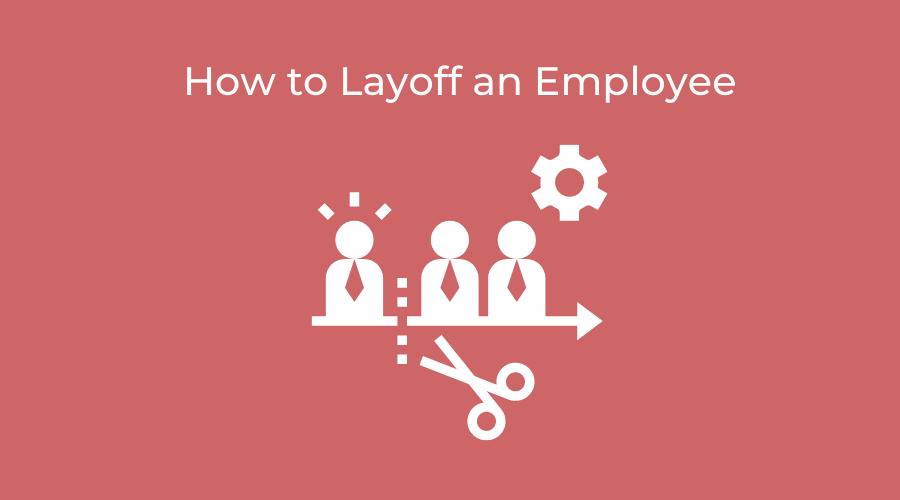
Human Resources
3 min read
How To Layoff An Employee
One of the less liked aspects of working in HR is terminating or laying off employees. While terminations don’t happen often and, in some cases, can be avoidable, layoffs tend to be driven by the needs of the business. Since globalization and social media have given us all the ability to harness unlimited information in the palm of our hands via cell phones, employers cannot afford to get layoffs wrong. Especially bad are those layoffs via text stories. What happens when employers screw up a layoff? The world hears about it. The quickest way to increase your reputational risk is to have your layoff trend on social networks. If your layoff was driven by the market or financial restraints, you risk losing more customers and future candidates. If you fumble the layoff in some way, you also run the risk of seeing current employees start looking for new employers and the laid-off employees completely writing your company off for good. If this isn’t your first layoff nor is it the first time your layoff trended, it highlights a potentially toxic environment. It also shows an inability to improve processes. To be careless with your laid-off employees also highlights the employer may be careless with the employees that are still with them and have not accounted for survival guilt, burnout from an additional workload, and more. Is there a perfect way to lay off employees? No! Layoffs affect one’s livelihood. Employees are facing increasing anxiety from living in a never-ending pandemic, a war that has global impacts, rising inflation in just about every market, and more. While a layoff may help the business’ bottom line in the short term, it is one more thing already anxious employees must manage. If there is no perfect way, how can an employer improve their layoff process? Audit your current process. If you don’t have a process, then today is a great day to create one. Even if you don’t foresee your employer laying off employees anytime soon, it’s still a great time to build a contingency plan for the day you must. If you have a process and you’ve laid off employees before, it’s a great time to review how effective that process is. What did you learn from your previous layoff? What trends did you see from current/past employees or potential customers discussing your layoff on social media channels? If you could redo the layoff, what would you do differently? Get buy-in from the right players. The quickest way to kill a project before it starts is to not include all key players in the process. Layoffs are sometimes like that. While you don’t necessarily have to share a list of at-risk employees, you should connect with stakeholders in the process. Some of those stakeholders could be your recruiting team. One thing I find odd is to see a company hiring while also laying off employees. Is there a possibility to transition employees into new roles to avoid laying them off? Other stakeholders are the key players who discuss talent planning and succession. Could there be a possibility to shorten succession times by moving at-risk employees into roles, especially if the layoff has the potential to increase a knowledge gap in a role or department? Provide the right “layoff” benefits. What severance package do you offer employees? It’s typical for severance packages to offer X number of weeks in pay for X years of service, but additional benefits are needed. COBRA insurance is expensive; could you extend health insurance for your laid-off employees? Do you offer EAP or mental health services that you can extend for these laid-off employees? What transitional services could you provide to help them find their next job? Transitional services should include resume reviews and career coaching. Create a marketing plan. Most employers would rather not have to mention layoffs. They’d rather let the people know who were impacted and go about their day. However, social media makes that unavoidable. It’s becoming more common to see articles and trending topics even before the layoffs happen. Therefore, not only do you need talking points, but you should have a marketing plan to proactively address the backlash. No longer can you sweep this under the rug because your reputation is at stake. Follow the law and keep your word. This should go without saying but needs to be said. Please have your legal and HR teams verify laws to ensure you’re not breaking any. And when extending benefits or services, have integrity and honor your commitments. At the end of the day, laying off an employee is not transactional and shouldn’t be treated as such. Every step of the process must have a human-first approach. It’s not OK to hold a zoom meeting to announce a massive layoff. It’s not OK to direct deposit severance checks in an employee’s account before even telling them they’ve been laid off. When you approach it with the same care and concern you give your customers, you will be able to alleviate some of the pain points that come with laying off employees. Timara Nichols has 15+ years of experience, specializing in human resources, operations, and customer success. She holds the following certifications – aPHR, Certified ScrumMaster, and Meta Certified Community Manager.
Continue reading
Human Resources
2 min read
HRIS Software Migration Tips
Due to workforce growth and changing business objectives many companies find themselves transitioning to a new Human Resources Information System. The transition process from start to finish can include sourcing new software, navigating the sales process, mapping the implementation plan, data transfer or data conversion, and employee training. It can be overwhelming if you haven’t been through the process before. Ensuring you choose the right software to fit department needs and deciding what data to pull through is complicated, especially considering compliance and regulatory requirements. Here are 7 tips for your next HRIS software migration. Needs Analysis First, your team needs to identify the reason for the migration. Are you looking to move to a better user interface? Do you need more efficient reporting tools? Do you want employees to have higher engagement? Start by creating a list of your top ten requirements. Get the whole team involved to allow for as much clarity and input as possible. A new software may provide an opportunity to contemplate a more progressive use of data. Think about the ways your HR team can use an HRIS to influence the business goals. Are you hoping to track diversity? Do you need to easily pull data analytic visuals to show the value of your strategic plans? Do you need an applicant tracking system to help you fill roles quickly? Most HRIS companies offer a multitude of products which can increase the cost quickly. You will want to ensure that you have your biggest needs at the forefront. Identify a Budget Meet with executives to determine cost limitations. You will want to go into the sales process with a good idea about your spending limit. This a significant investment for your company; you will want to guarantee the executive team is fully supporting the transition and investment expense. Sales Team Antics The sales managers at these companies are good at what they do. They are going to show you a demo that will leave you pulling out the checkbook ready to sign on the dotted line. When that happens, take a step back. Treat this like buying a car. You need to test it out and seek plenty of outside input. Ask them to reveal a couple companies using their software in similar industries. Reach out to those companies directly for honest feedback about the interface, implementation process, and customer service level. Read online reviews. Take your time. Resist the pressure to follow a strict sales deadline. Do your due diligence to make sure they are capable of what they are selling you on. Data Transfer Prior to making any moves take the time to clean up your existing data. Next, decide what data fields must be moved over to the new system as well as how many years of history your team regularly needs access to. You’ll want to make sure historical data comes with you. For information not being migrated, determine a storage location in the chance that you would need to reference it later. Tackling Implementation Taking on an HRIS implementation requires a team effort. Divide and conquer by assigning duties to subject matter experts in your department. Work with the HRIS software employees to create a reasonable timeline with clear expectations about what will be completed and when it will be completed by. Identify test users who will look through every tool of your new software and become well acquainted with the user capabilities. Employee Roll Out Some industries have more technologically literate employees than others. Determine where your employees’ abilities stand and plan strategically about how to communicate the change to them. If needed, hold training sessions to demo how employees can best utilize the new HRIS. Change is hard for most people, so be patient. Monitor Progress Once you are live with the new HRIS, track employee usage, check to make sure all the tools you agreed upon are all working properly, and pull data sets to audit for accuracy. I recommend, if you are able, to create a small window of overlap where you maintain access to the prior system for a few months. This can be extremely useful in the instance you need to reference back. Do not hesitate to get the implementation team back in if something isn’t going the way you expected. Stephanie Mauney is freelance writer and content curator specializing in Human Resources.
Continue reading
Recruiting Tactics
2 min read
How to Attract More Job Applicants
To win in talent acquisition today employers must begin to make job offers in a matter of days not weeks according to a new report from Boston Consulting Group (BCG). They also need to streamline the mobile application process. It’s no secret that employers face a daunting hiring challenge. The numbers are staggering: 4.5 million people left their jobs last November, and there are 10.6 million active job listings in the US along with a net labor shortage of 4.3 million workers. In 2020 and 2021, the vast majority of turnover occurred in the hourly service sectors like hospitality, retail and food service. In response, many companies have gotten creative to compete in the hiring war for hourly workers, incentivizing potential employees with sign-on bonuses, increased wages and additional PTO. But this latest BCG report finds that employers need to adopt an analytical, data-backed approach to their pipeline to truly attract more job applicants and improve their hiring rates. “Our analysis shows that many successful companies employ a ‘test-and-learn’ approach to hiring. The right data that is accessible to the right people is critical to success, ” said David Welch, managing director and senior partner at BCG. Here are four things employers must do today to effectively compete for job applicants; Expedite the Hiring Process BCG’s analysis of proprietary data from ATS provider Fountain found that employers who present job offers in less than seven days yield 80% more hires on average than organizations with longer timelines. What’s more – each day removed from the hiring process improves that rate. The best candidates looking for work are applying to multiple positions, and the employer presenting jobseekers with their first offer are more likely to win that talent. Texting job s cam also add speed to the process. Broaden Your Screening Qualifications BCG’s analysis found that the quality of candidates can vary greatly across various job boards, and with myriad options to choose from, employers that explicitly balance hiring quantity and yield will improve business outcomes. Eighty-four percent of applicants reported applying for a position using their smartphone, so companies need to make sure they are targeting candidates more strategically. Location is a common screening tool that employers use when searching for candidates. While 70% of applicants seek jobs less than 15 miles from their homes, BCG found that applicants willing to travel farther were hired at an equivalent or higher rate. Job Postings That Articulate Company Benefits According to BCG’s report, 46% of job postings analyzed did not mention benefits provided. Yet analysis showed that offering certain benefits improved applicant yields and resulted in higher quality applications. Benefits that increased hiring rates most significantly included bi-weekly pay (34%), 401k (34%), medical leave (27%), tuition reimbursement (25%) and PTO (25%). Revise Job Requirements to be More Inclusive BCG found that employers need to continuously analyze certain criteria throughout the process of crafting job listings to increase the likelihood of improved hiring results. For example, positions without explicit age requirements generated more applicants but resulted in a lower hiring rate than positions with age requirements. BCG also discovered that companies attracted more applicants when they relaxed requirements tied to work experience, but saw double the hiring rate when they specified that experience. Finally, education requirements like a GED or high school diploma decreased applicant pools by 40% without improving the hiring rate. Hiring is both science and art. Organizations than can leverage data to improve the hiring experience will stand out to job applicants.
Continue reading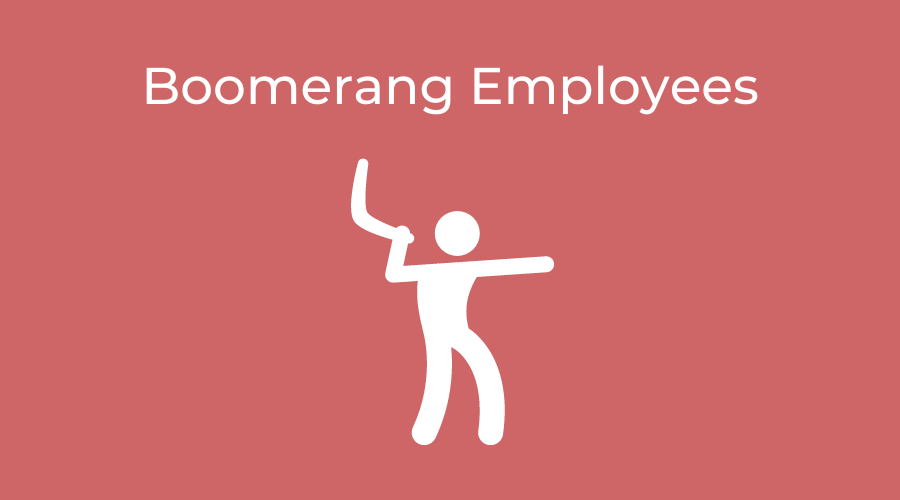
Recruiting Trends
3 min read
Boomerang Employees
Several years ago, while attending a work function for an employee resource group I was a member of, a speaker mentioned that you must sometimes leave your employer to see a significant pay increase and then come back. While it may seem shocking for some, more and more employers are seeing boomerang employees or returning employees. Why do employees leave in the first place? Employees leave for different reasons – whether they’re trying to escape a toxic environment, or a job opportunity was offered to them, and it was too good to ignore – they leave because the grass appears greener on the other side. The Conference Board reported that 2022 salary increase budgets were estimated to be 3.9%, the highest it’s been since 2008. Historically those budgets are never higher than 3%. Moreover, internal promotions often come with a cap, so it’s extremely difficult to receive a promotion with a significant increase. On the other hand, external hires receive 18-20% more than internal candidates. While employers do realize it’s cheaper to keep employees, the power is no longer in their hands. Not only is it a candidate’s market, but candidates are also refusing to compromise in certain areas. Where companies are forcing employees to return to the office, candidates are looking for remote first or remote only companies. Entire industries are facing candidate shortages – like the fast-food industry – because of low wages. In response, some employers are adapting to the times by offering remote work or increasing minimum wages. Simply put, the great resignation is opening the doors for boomerang employees. Should you hire a boomerang employee? Yes! Boomerang employees are like internal employees, as they’re familiar with the culture of the organization and are proficient in the technology the organization uses. Where onboarding someone completely unfamiliar with the ins and outs of the organization means you must teach them the nuances of the role and organization, you do not have to do this with boomerang employees. Also, if a boomerang employee left because of a lack of upward mobility, between the great resignation and retirement, roles may be more available today than they were previously. Boomerang employees are also familiar with their coworkers, as they’ve more than likely worked with them before. This eliminates the need to build rapport and ensures that already tight deadlines can be achieved without typical new group development dynamics – forming, storming, norming, and performing. Depending on how long the boomerang employee worked with you before they left, they may be able to address any brain drains that were exacerbated because of them leaving. What are the downfalls of hiring a boomerang employee? Businesses suffer great losses when a high potential employee leaves. A high potential may have been in a succession plan and was being groomed to take on future leadership positions or they may have been so invaluable they were doing the work of multiple employees. Backfilling their position was not easy. However, when they return, they bring back their potential with the bonus of having acquired new skills since previously being employed. But what happens when it isn’t a high potential that’s returning? When a problematic or less than stellar employee returns, their issues may return with them. While you can circumvent this by marking the employee as ineligible for rehire, if the hire’s performance wasn’t addressed when they were originally employed, they could dispute those findings and win. So how do you ensure the “right” boomerang employee was hired? To start, look at your current performance management policies and fill any gaps in the process. You cannot fix what was never addressed. You also cannot improve what you fail to acknowledge. Once that’s solidified then review your job descriptions and hiring process to ensure you’re objectively ending with the best candidate for each opening. Another tactic to create a welcoming environment for boomerang employees is to create a talent community, especially for them. Some companies have done this with retired employees or interested external candidates. To provide a community for potential boomerang employees means you continue to nurture them as passive candidates and then whenever a job opportunity of interest becomes available, they’re more likely to apply. Lastly, you could continue to nurture potential boomerang employees by connecting with them in professional communities, like LinkedIn, and periodically checking in with them. Either way, in today’s current landscape it’s more and more common to see a boomerang employee or two. Welcome them as you would any external candidate and nurture them like you intend to retain them for the long-term. Timara Nichols has 15+ years of experience, specializing in human resources, operations, and customer success. She holds the following certifications – aPHR, Certified ScrumMaster, and Meta Certified Community Manager. She’s passionate about talent and people operations.
Continue reading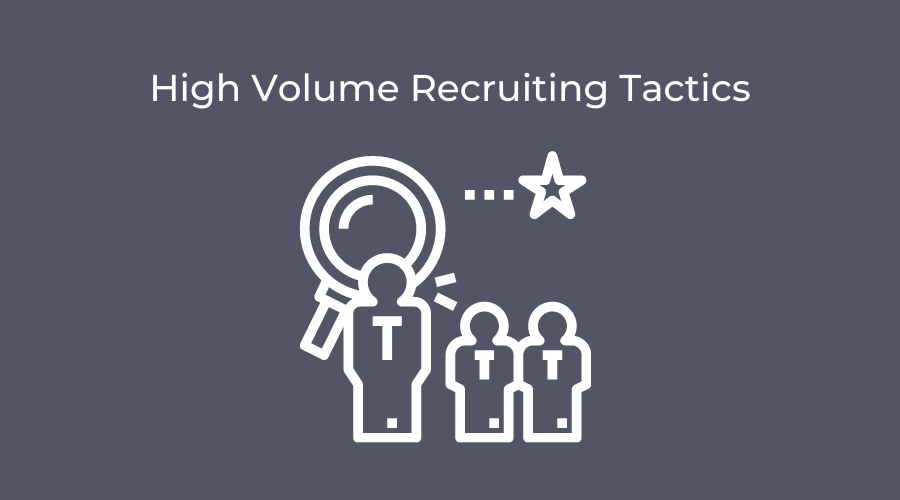
Recruiting Tactics
2 min read
High Volume Recruiting Tactics
With current staffing trends, many companies are having to utilize high volume recruiting to fill current openings and ensure a well flowing candidate pipeline. Although many candidates out on the market claim they have applied to hundreds of roles throughout their job search; it can still be difficult to source the right person for a role, especially when a recruiter is looking to fill a large number of positions at once. High volume recruiters can be faced with very high stress levels. They are often required to meet tight deadlines and fill multiple positions a day. Their compensation may be tied to their hiring metrics. While there may be a high demand and an overall large talent pool for entry level positions, the competition with industry competitors can often lead to no show interviews, candidates backing out at the last second, and bold counter offers. Targeting mid and senior level candidates poses similar obstacles. Companies are forced to find the competitive edge to stand out. Add in the requirement to finding several qualified people per day, and high volume recruiters are faced with a challenging reality. Creativity, innovation, industry expertise, and advanced research skills are just a few examples of how some recruiters beat out their competitors. Here’s some tactics to consider; Ensure job seekers can locate and understand your positions Work together with your technology and marketing experts to ensure roles are easily accessible. Are candidates able to find your jobs based on similar titles? Search optimization can mean a huge difference in audience reach. Is your job ad clear and accurate? Collaborate with hiring managers to ensure the job posting meets the expectations of the role. Implement automation into your job posting How many candidates see your job and keep scrolling? Even worse, how many start your application only to walk away after realizing your application was going to take an hour of their time? Think about ways your post can be streamlined to catch the eye of the candidate, remind them to follow through, and create a seamless timely application process. Remember, you represent the company to every candidate that applies Although, it may be difficult to personally respond to a high number of applicants, it is vital to not only securing the candidate who is ultimately hired but also keeping candidates who aren’t hired interested in future roles. Personal investment can have big returns on your ability to fill future openings. Initiate texting to speed hiring According to AIHR, when it comes to modern-day job seekers, over 90% of them use their mobile devices to look for that dream job. Our world is mobile. Recruiters have personal access to the device candidates are likely spending multiple hours a day checking for updates. Texting is a great way to reach people fast, reducing that wait time for a returned email and keeping them updated with the current application status. Give job seekers the tools to succeed Many applicants to entry level positions or blue-collar industries may not have the necessary means to land the job they are qualified for. Point candidates in the right direction by offering a resume builder, interview tips, coaching on interview etiquette, or preparing them for what to expect throughout your process. By providing this type of automated baseline support you could be gathering applicants that otherwise may have been passed over entirely. Treat candidates as human beings Remember that job seekers are putting themselves in a vulnerable position. They may be trying to provide for a family or get off the ground after a difficult lay off. Respecting their time and efforts goes a long way. The average corporate recruiter has dozens of job reqs to deal with. The ones that prioritze the candidate experience always win. With high volume recruiting, it’s important to never burn a bridge with your candidates whether they are hired or not. Keep them updated throughout the process. Advocate for them. Celebrate when they are extended an offer. Encourage them when they don’t receive an offer. Take a moment to offer them job search advice, resume feedback, and support. Even in a rejection, there are ways to be encouraging. Qualified job seekers should be urged to re-apply. Although they may not have been the best fit at the time, they can take away key tips and come back more prepared for your next opening. Stephanie Mauney is freelance writer and content curator specializing in Human Resources.
Continue reading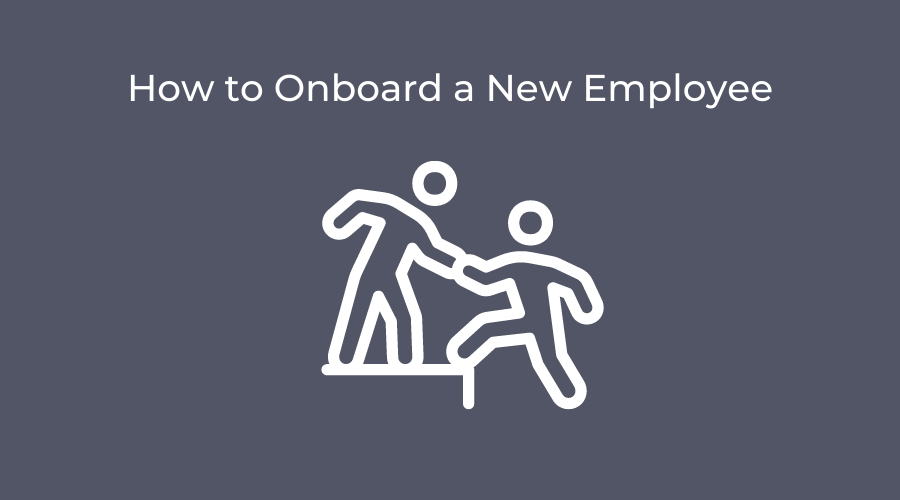
Human Resources
3 min read
How to Onboard a New Employee
You’ve made the offer and they’ve accepted. Great! You consider this a job well done. But wait? The job isn’t done. How do you plan to onboard them? Successfully onboarding your new employee ensures they’re able to quickly imbed themselves into the culture of the company while productively fulfilling the duties of their role. Whether you have a stellar onboarding process or you’re still wondering what onboarding is, there’s always room for improvement. I’d like to separate onboarding into two halves – before the employee starts and after their first day. HR should be equally involved in both halves, although you will become less involved after the new employee starts. How do you know when you’ve onboarded a new employee successfully? Successful onboarding doesn’t just mean there weren’t any glitches in the process. Successful onboarding ensures a new employee feels confident in their new role and company. It also shows that the team was able to see a lift from the new employee taking on the work slated for them. What should happen before the new employee’s first day? All necessary paperwork should be completed or, at least, sent to the employee to complete on day one. This includes paperwork for payroll, background checks, I-9, and anything else you consider necessary for the new employee to start working at your company. The new employee’s equipment should all arrive before they’re slated to start as well. Since the world is facing production and shipping delays, it may be best to have equipment on standby. And, if you can, swag is a wonderful way to show appreciation for your new employee. However, if that isn’t in the budget, making sure the team enthusiastically welcomes the new hire will suffice. This can be done via internal communications, announcements in team meetings, or letting the team know so they can reach out on the first day to greet the new employee. If you already do this, then I suggest looking at each process to see where you can simplify or streamline it. Does your paperwork have to be printed out for the new hire to complete it? How can you get rid of that and make the entire process electronic? Do you only offer limited choices in equipment? How can you expand that to better accommodate the needs of all hires? Is benefit or 401K enrollment manual? How can you integrate that into the HRIS to automatically generate the necessary forms needed to enroll the employee? Also, how do you assign system access? HRIS will do this for you. Have you turned on all your integrations to make this happen? What happens on day one and going forward? So, the employee has started. Now what? Connect with the employee on the first day to set expectations for the first 30, 60, and 90 days of their employment. Whenever possible, supply documentation to support the onboarding plan. Make sure to provide time to address any concerns you or your new employee will have. The onboarding plan should also have checkpoints and meetings that coincide with each checkpoint to ensure the new employee is meeting expectations and/or can receive added support to perform their job duties. In addition to a concrete onboarding plan, the new hire needs two support partners. One support partner will be a peer and someone on the new employee’s team. The second support partner should be someone on a different team, a team that normally doesn’t interact with the employee’s team. This support partner should not be anyone in HR. The peer support partner is to provide the new employee a coaching buddy, someone who knows the responsibilities of the role and what success looks like in that role. This will be someone the new employee can lean on daily to aid with any setbacks they face in learning the hard and soft skills of their new role. The second partner will be someone who can help mentor them by explaining the culture of the organization and addressing any unfamiliar nuances the hire may face. This person acts as an impartial representative of the company. While HR isn’t as involved in onboarding once the hire starts, HR should make it a point to connect with all new employees during the process. These could be check-ins to give clarity and support on anything the other partners have missed. New employees should also be surveyed by HR to measure the new employee’s experience to glean insight into improving the onboarding process for future hires. When onboarding is done successfully it sets the right expectation for the entire employee’s experience with the company. It also enhances the culture and strengthens the entire workforce. This guest blog contribution is from Timara Nichols
Continue reading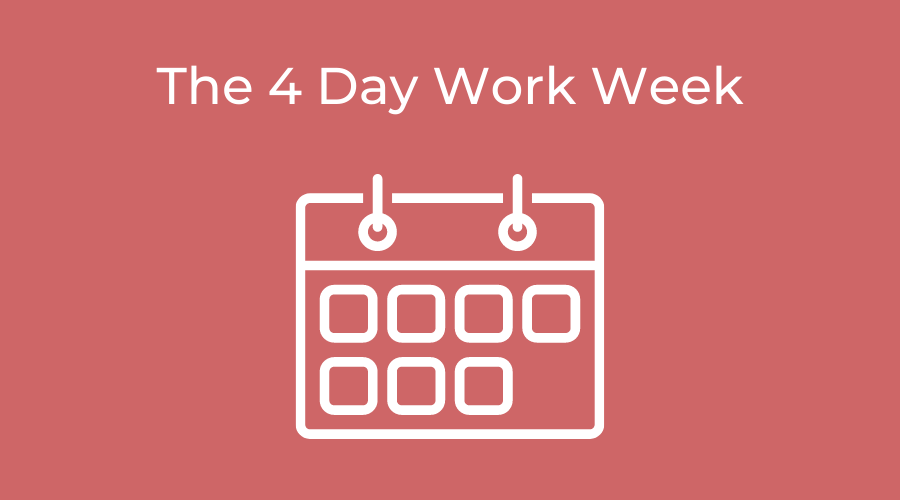
Human Resources
2 min read
4 Day Work Week Gaining Steam
The 4 day work has long been a dream of many workers. It provides more rest and more attention to the personal lives of employees, so they’re more invigorated to be more successful and driven to make the company succeed. Some studies even say that it’s been proven to be effective in not only maintaining productivity, but improving it. According to new research from Qualtrics, nearly all U.S. employees (92%) say they want a four-day work week, citing improved mental health and increased productivity as the perceived benefits. 74% of workers said they would be able to complete the same amount of work in four days, but work longer hours on those days. See the full study results here. The idea is even seeping into the restaurant industry. NYC restaurant company DIG has introduced it to its workforce. According this story on fast Company: “In an industry where it’s common to work unpredictable shifts—and where workers also often have to take a second job to make enough money to survive—Dig was already unusual in that it offered 40-hour weeks. To keep the same number of hours, workers who chose to switch to the four-day week had to change to 10-hour days. Unlike a fast-food restaurant, Dig’s food requires a lot of prep work, so long shifts make sense.” 4 Day Work Week is About Flexibility In today’s competitive labor market, flexibility over when they work is among workers’ most common requests. Ultimately, increased flexibility beats out a set four-day work week for more employees. When asked to choose between the two, 47% say they’d prefer a four-day work week, compared to 50% who would rather have increased flexibility to work when they want. Here’s what else it brings to the table; 79% of U.S. employees say a four-day work week would improve their mental health; 82% say it would make them more productive Only 38% say a four-day work week would encourage employees to slack off, compared to 60% who say it wouldn’t. Despite the popularity of the idea, many employees fear a shorter work week could have a negative impact on the company’s bottom line and relationships with customers. Forty-six percent believe a four-day work week would have a negative effect on sales and revenue, and 55% say a shorter work week would frustrate customers. “What employees really want and expect is the flexibility to adjust their work schedules to fit the demands of their lives. In today’s new world of work, successful companies will set aside antiquated assumptions about what productivity looks like and listen to employees, so they can offer the flexibility that meets their individual needs,” said Benjamin Granger, Ph.D., head of employee experience advisory services at Qualtrics. “While there is increasing momentum around the idea of working four days a week, employees are willing to acknowledge the associated tradeoffs — like working longer hours or potentially frustrating customers.” Recruiting with a 4 Day Work Week When it comes to recruiting and retaining talent, however, employees are confident that a four-day work week would be beneficial. Employees say a four-day work week is the number one thing that would influence them to stay at a company longer — even more than unlimited vacation or paid mental health days. Eighty-one percent say a four-day work week would make them feel more loyal to their employer, and 82% say it would help their company with recruitment. More than a third (37%) would even be willing to take a 5% pay cut or more in exchange for recurring three-day weekends. As a former corporate recruiter I can easily say this would be a huge carrot to dangle in front of candidates. Don’t be surprised to hear about more 4 day works weeks in the news over the next few years.
Continue reading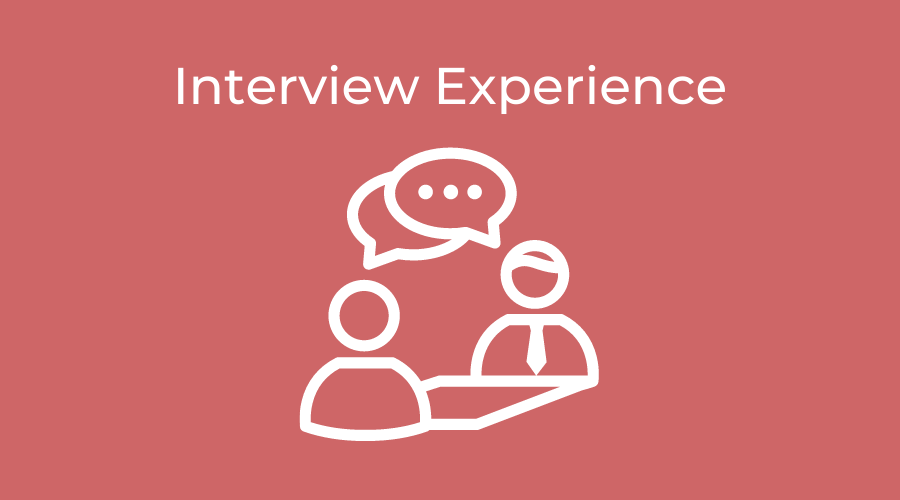
experience
3 min read
Interview Experience Tips for Employers
What is your organization’s interview experience philosophy? Is it seen as a means to an end? Do you see it as a simple filter-down procedure? What if your organization treated the interviewing experience with deeper purpose? Could it hold the potential to expand a strategic brand image? Could it be used to make lasting connections with even those who don’t make it into the role? Amidst the latest boom of employees looking for the next bigger and better employment option, employers are having to get additional staff in on the interviewing process. Talent Acquisition Specialist was ranked #12 in LinkedIn’s 2022 Jobs on the Rise list. The field of people deciding who gets to move on to the next step in the interview process is growing exponentially. The current state of mass shuffling of careers also means candidates have options. What is your organization doing to ensure a positive interview experience? Imagine the viewpoint of a candidate who encounters the following: They’ve applied to a job that feels like a perfect fit. Your organization has lured them in with a conglomerate of glamorous benefits and promises of a well-respected work-life balance. They are thrilled when they get the email that their resume has made it past the ATS, and they’ve been chosen to interview with a recruiter! It’s a zoom interview, of course, so they bring their A-game and have at least their top half looking like the professional they are. All this anticipation leads up to a call with your designated first point of contact in the interview process: a blank faced, personality lacking, monotone voiced, recruiting robot persona merely reading off a checklist of interview questions from their screen with little to no effort towards having a two-sided conversation. Does that sound like the type of interaction that matches the exciting culture and innovative platform the company was advertising? No. It is extremely hard to thrive in an interview where it feels as if the person opposite is just getting through an assigned checklist of screening questions. In the current war over top talent, it is essential for employers to recognize the importance of making real connections in the interview experience. Candidate evaluators must ensure they are supporting the philosophies and values their company advertises. Consider the consequences of not doing so. Job seekers have a myriad of options laid out; they likely won’t choose to move forward with an employer who fails to meet expectations during the interview process. How can you frame the interview experience to guarantee potential employees walk away with an optimistic opinion? Be punctual. Candidates have likely taken time away from their current job to interview with you. Be respectful of that. If you expect the applicant to show up on time, you should do likewise. For goodness’ sake, smile. If you can’t at least pretend to enjoy talking with someone who could become your next colleague, you may not be in the right field. Attempt a genuine connection. Showing an interest or merely connecting over a trivial mutual interest puts the candidate as ease. When the candidate is at ease the employer experiences a more authentic response. Glimpsing who the applicant truly is an advantage to your company. Don’t use a Zoom background filter. Whether you work from home or the office, this interview showcases the work environment your company has built. Give the candidate a chance to see what that environment, real or virtual, could be for them. Be sensitive about the discussion surrounding compensation. Upfront pay transparency is the ideal direction by avoiding this issue altogether. However, if that’s not your organization’s policy, don’t make pay the initial center of conversation. If the applicant isn’t already nervous enough, bringing up the most uncomfortable topic of discussion may leave them shaken or questioning their response for the rest of the interview. Understand your company, the benefit package, and the details of the job. How does it look if the employees leading your interviews aren’t able to explain the ins and outs of basic benefit, culture, or job duty information? Be prepared to answer questions concerning parental leave, the product or service you provide, the PTO offered, or how your company build its culture. Are the recruiters, hiring managers, and interview panels your company uses leaving candidates with a positive memory of your organization? If not, you may need to rethink how you view attracting your most important business asset: the future of your success. Contribution by Stephanie Mauney
Continue readingAbout Emissary
Emissary is a candidate engagement platform built to empower recruiters with efficient, modern communication tools that work in harmony with other recruiting solutions.
Stay in the loop!
Subscribe to our bi-weekly newsletter and keep up to date with the latest Recruiting and HR tips and trends.
By clicking send you’ll receive occasional emails from us.
